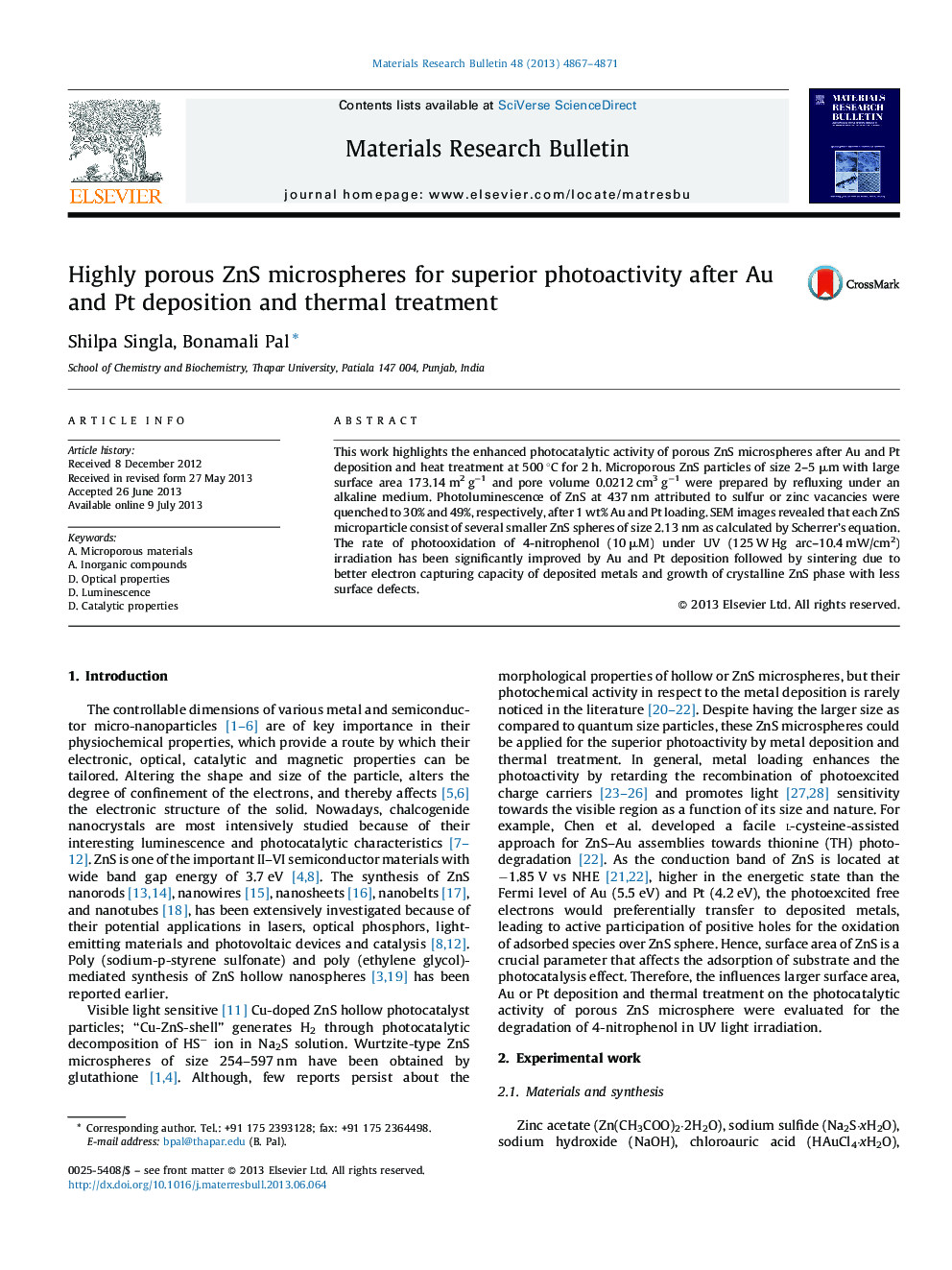| Article ID | Journal | Published Year | Pages | File Type |
|---|---|---|---|---|
| 1488977 | Materials Research Bulletin | 2013 | 5 Pages |
•Photoactive ZnS microsphere of size 2–5 μm was prepared by hydrothermal route.•Highly porous cubic spherical ZnS crystals possess a large surface area, 173 m2 g−1.•1 wt% Au and Pt photodeposition highly quenched the photoluminescence at 437 nm.•Sintering and metal loading notably improve the photooxidation rate of 4-nitrophenol.•Pt co-catalyst always exhibits superior photoactivity of ZnS microsphere than Au.
This work highlights the enhanced photocatalytic activity of porous ZnS microspheres after Au and Pt deposition and heat treatment at 500 °C for 2 h. Microporous ZnS particles of size 2–5 μm with large surface area 173.14 m2 g−1 and pore volume 0.0212 cm3 g−1 were prepared by refluxing under an alkaline medium. Photoluminescence of ZnS at 437 nm attributed to sulfur or zinc vacancies were quenched to 30% and 49%, respectively, after 1 wt% Au and Pt loading. SEM images revealed that each ZnS microparticle consist of several smaller ZnS spheres of size 2.13 nm as calculated by Scherrer's equation. The rate of photooxidation of 4-nitrophenol (10 μM) under UV (125 W Hg arc–10.4 mW/cm2) irradiation has been significantly improved by Au and Pt deposition followed by sintering due to better electron capturing capacity of deposited metals and growth of crystalline ZnS phase with less surface defects.
Graphical abstractHighly porous ZnS microsphere of size 2–5 μm having large surface area ca. 173.14 m2 g−1 exhibits superior photocatalytic activity for the oxidation of 4-nitrophenol under UV light irradiation. The rate of photooxidation has been significantly improved by Au and Pt deposition and after sintering, respectively, due to rapid electron acceptance by metal from photoexcited ZnS and growth of crystalline ZnS phase.Figure optionsDownload full-size imageDownload as PowerPoint slide
